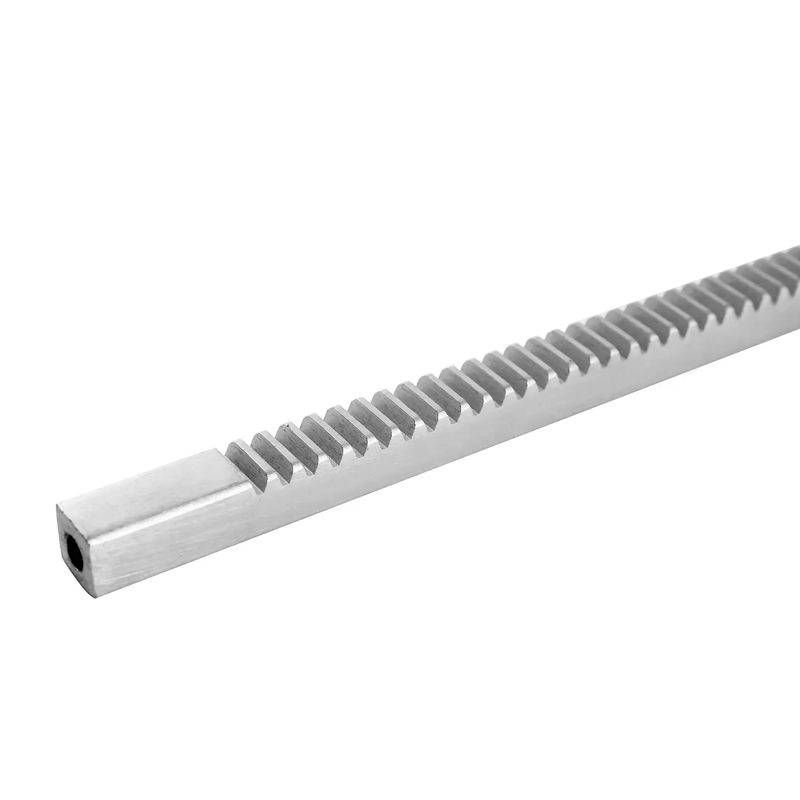No. 200 Gaoxin RD, Shanghua St, Lanxi, Zhejiang, P. R China
The Stainless Steel Rack Pinion Gear for Sliding Motors is a high-prec...
See DetailsHelical gear racks and pinions are mechanical components used to convert rotational motion into linear motion, similar to straight gear racks and pinions. However, they differ in their gear tooth geometry. In helical systems, the teeth are cut at an angle to the axis of motion, forming a helix. This design allows for smoother and quieter operation compared to straight gear systems, which is particularly advantageous in applications requiring continuous or high-speed motion.

The design of a helical gear rack and pinion begins with the selection of helix angle. Common helix angles range from 15 to 30 degrees. A larger angle generally results in smoother engagement but also increases the axial load on the pinion, which must be managed by the supporting bearings. The designer must carefully balance the desired smoothness with mechanical limitations of the system.
Material selection is another important aspect. Helical gear racks and pinions are typically made from steel, but other materials such as aluminum or engineering plastics may be used depending on load, cost, and environmental factors. The material must offer sufficient strength, wear resistance, and machinability.
Tooth profile is also crucial. Involute tooth profiles are standard, and precise machining ensures correct meshing and efficient transmission of motion. Backlash—clearance between mating teeth—must be minimized for precision applications, yet enough must be allowed to prevent binding under thermal expansion or misalignment.
Stainless steel straight gear racks are widely used in industries requiring high resistance to corrosion, precision linear motion, and structural strength. The straight rack, when paired with a pinion, converts rotary motion into linear displacement, making it a core component in many mechanical systems.
One of the key applications of stainless steel straight gear racks is in the food and beverage industry. Equipment in this field is frequently exposed to moisture, cleaning agents, and varying temperatures. Stainless steel's inherent corrosion resistance ensures the gear rack remains reliable under these conditions, reducing the need for frequent maintenance or replacement. Moreover, its non-reactive nature aligns with hygiene and safety regulations.
In the pharmaceutical and medical sectors, stainless steel straight gear racks are used in automation systems for processing, packaging, and inspection. Cleanroom environments require materials that do not generate particulates or react with chemical agents. Stainless steel is suitable due to its smooth finish, ease of cleaning, and non-contaminating properties. Its mechanical precision supports the high accuracy required in dosing and handling operations.
Stainless steel straight gear racks are also applied in marine equipment, where saltwater corrosion is a primary concern. Boat lifts, deck machinery, and adjustable gangways benefit from the material's durability in aggressive environments. Its ability to maintain structural integrity under fluctuating loads and temperatures makes it a reliable choice for outdoor or coastal installations.
Additionally, in architectural and transportation systems, stainless steel gear racks enable reliable motion in retractable structures, elevators, and automatic gates. These installations benefit from both the mechanical strength and visual appearance of stainless steel, especially when aesthetics and long service life are design considerations.
In all these applications, the stainless steel straight gear rack offers a balance of precision, environmental resistance, and mechanical reliability, making it a preferred component in specialized and demanding settings.